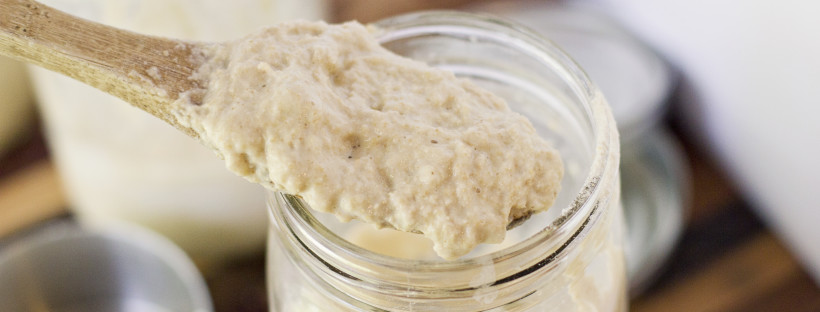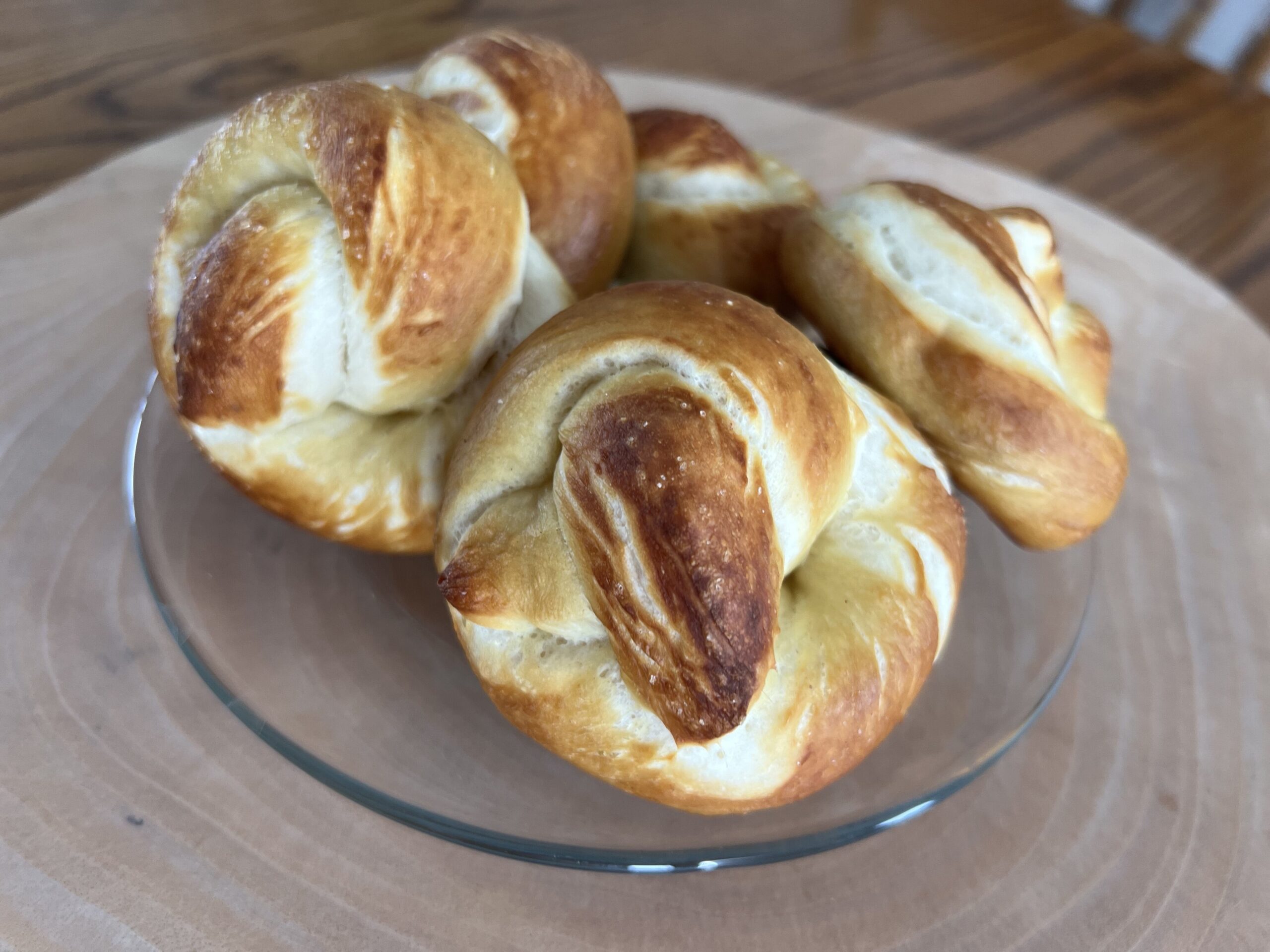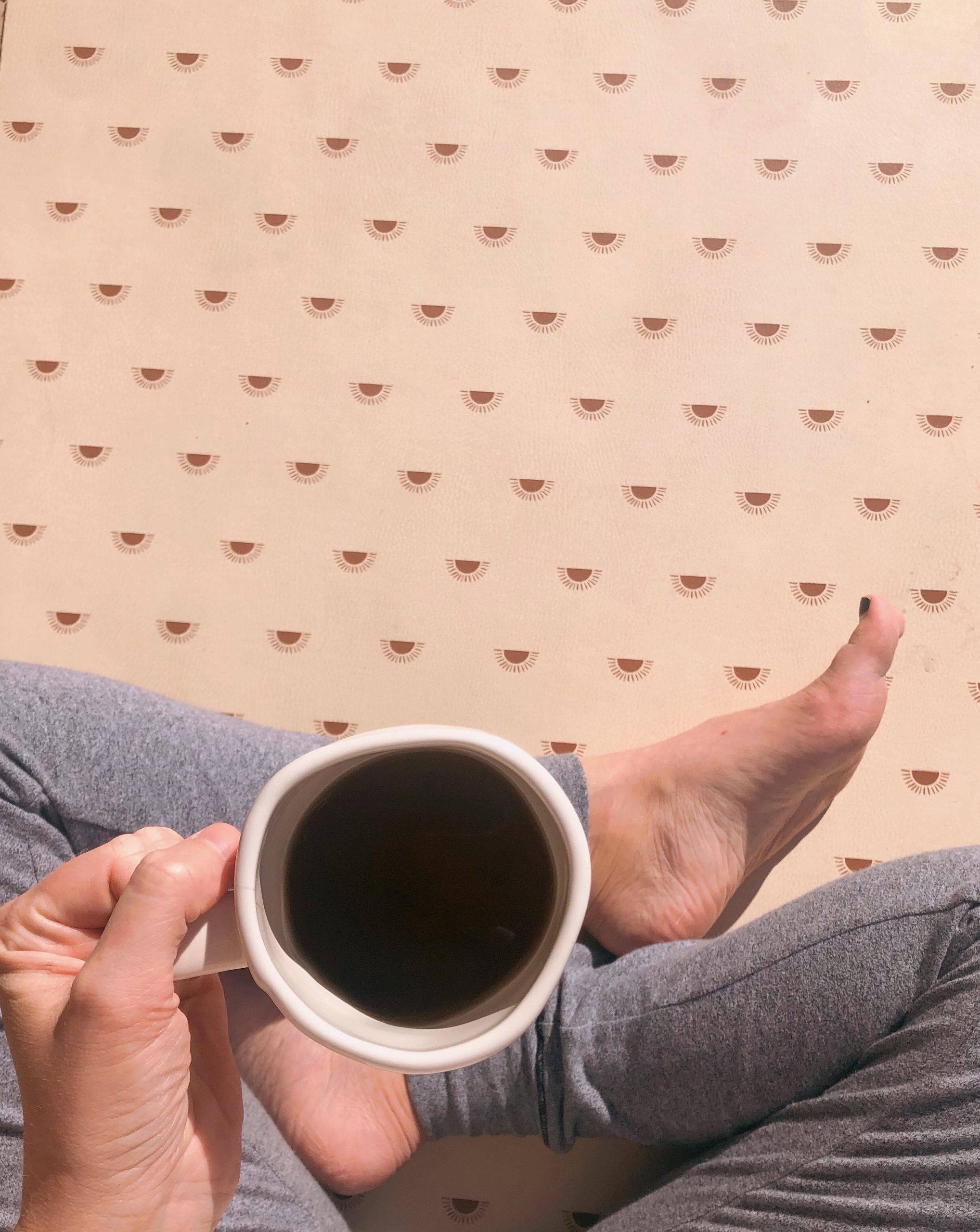I always use the terms “natural yeast” and “sourdough” interchangeably on social media and to categorize recipes on my blog. This is because most people recognize sourdough, but the term natural yeast might be new. And there is a difference between the two that I get asked a lot about. So I decided to quickly get a post in the archives of the differences for future reference!
A typical sourdough starter is kept in a crock or other container on the countertop. Because it is at room temperature, the starter grows more quickly and has to be fed more often (usually every day). Hundreds and even thousands of years ago, this wasn’t an issue because that sourdough starter was used and fed as part of the day’s chores. The bread/pancakes for that day were made with it. The result was a noticeably ‘sour’ starter. In case that wasn’t obvious with the term, ‘sourdough.’ This traditional sourdough is most likely what your grandmother used. And if you are lucky enough to have inherited her crock, you are in business!
Natural yeast was coined by Melissa Richardson, who wanted to develop a method of using sourdough without the high maintenance. When she began storing her starter in the fridge and feeding only every 3-4 days instead of every day, Natural Yeast was born. She wrote two cookbooks on the subject, and this is how I was introduced to the Natural Yeast method that I know and love.
Natural yeast is much milder than traditional sourdough. Most times, my family and friends can’t even tell when I feed them baked goods using my starter. It does have a slight tang, but nothing overpowering. If you leave your natural yeast starter out and get it warmed up, it becomes more sour. Also not feeding it frequently enough will result in a more sour starter.
Why does it matter? Quite simply, it doesn’t. It is a personal preference more than anything. I love the mild flavor and low maintenance of my starter. To be honest, if I had to use/feed it every single day, I don’t know if I could put up with it!
My starter is very forgiving and bounces back even when it has been neglected. I used to think (when I first began this journey 4 years ago) that I was killing it all.the.time. I kept getting new ones from my sister-in-law because I was sure I was doing something wrong. In reality, I don’t think I have completely killed one yet, but I wasn’t used to the way it behaved and didn’t give leniency for it to adjust to my home and my flour.
These little starters are living things. They need attention and care (that is why I call them your little pets or my “grandchildren”). I know it is overwhelming at first. TRUST ME when I tell you I HAVE BEEN THERE. I have turned out dozens of flat, splitting, doughy, rock-hard, disgusting loaves of bread!
When I say it’s a skill to be learned, I am not saying that lightly. It takes time. Patience. Lots of patience. But the benefits are oh so worth it.
I hope you all feel that you can ask me any questions you might have about this. It’s something I love dearly and want to spread to all the world! It excites me when you succeed! So keep the e-mails and comments coming. Good or bad, I want to hear it all.







My starter is still being taken care of at my mother’s house… I was so tired of making all that effort – to have flat, not that great bread. Especially when I started seeing how everyone’s bread was SO NICE.
This post is a good reminder for me that it takes “time. Patience. Lots of patience.” (I just quoted you. Ha)
I know the benefits are worth it – I just need to dive in again.
Thanks for the motivation!
You are doing great. I love that your mom is taking care of it for you. What a good woman! It will come!!!
I agree, now that I have it down I love it and its worth the effort to have that learning curve. Now my bread turns out beautifully every time. I tried the english muffins, didn’t turn out, so I’m sure it will be the same with those too. I will be happy when I can be successful at those too.
Thank you, this was helpful! So if I do have more of a sourdough starter, but want it less “sour-y”….so keep it in the fridge and treat it more like a natural yeast starter, will it change and adapt?
Yes! it’s quite resilient.
I have natural yeast made with spelt in my freezer. It had gotten too sour for me. Do you think I can revive it and only feed it wheat? Will it lose some of the sourness?
I can’t say for sure, but if you want to transition it to wheat I would do so SLOWLY. Because starters love consistency, overwhelming it with all wheat at first will shock it quite a bit! the more consistent you are in feeding and using it, the less sour it becomes. keeping it in the fridge also helps with that!
HI Kelsey,
Thanks for this post it really helps. I am interested to know if you grow the natural yeast and keep it in the fridge is this the same as fresh yeast in bread recipes? I make all my own breads but use dry active yeast. I would like to start using fresh yeast but ideally would make this myself.
Thanks,
Jennifer
hi jennifer! no, this is different than fresh yeast. but you can still swap out starter for yeast in any of your bread recipes. it’s pretty easy – the conversion is 1/4 c starter per LOAF in the recipe. so if you have a recipe you love that makes 2 loaves, take out your instant yeast and add 1/2 c starter!